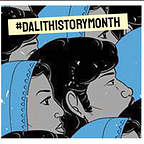The Maestro’s Melodies: Ustad Bismillah Khan
by Kushal Choudhary
Ustad Bismillah Khan was a world-famous shehnai player whose musical legacy continues to shine into the hearts of the people of the subcontinent. His incredible career of more than eight decades earned him the highest of civilian honours such as the Padma Vibhushan in 1961 and the Bharat Ratna in 2001
Ustad, or maestro, Bismillah Khan was born Qamruddin Khan into a family of shehnai players who had been court musicians to a ruling family of a region in Bihar. Since a young age, it is said that Qamruddin was involved in the family occupation of shehnai playing for court of a ruler in their native region in Dumroan.
Even as a toddler, Qamruddin showed a keen interest in the shehnai. At the tender age of four, his family moved to Varanasi where he came to be immersed in a vibrant culture of music and was constantly around professional artists and musicians. It was here that young Qamruddin found his mentor in his maternal uncle, Ali Bux, who faithfully taught him the rhythms and the disciplines of the shehnai.
Shehnai — Ustad Bismillah Khan Official, Youtube.com
The shehnai itself is a wind instrument, common across northern South Asia and popularly played for folk festivals concerts, marriages and other celebrations. Ustad Bismillah Khan’s musical genius took the instrument beyond the folk spheres of the subcontinent, to international acclaim. He brought the shehani to the larger stages and soon he was playing in concerts, films, music albums and other media, all with an unmatched prowess.
In particular, his music featured in many films that were considered landmark works including Satyajit Ray’s Bengali Film Jalsaghar (1958), director Vijay’s Kannada film Sanaadi Appanna (1977) and a Bhojpuri film Baje Shehnai Hamar Angana (1982) which was shot in his native village, Dumraon.
His genius and popularity are unmatched and yet what is never discussed is the fact that Ustad Bismillah Khan belonged to the Halalkhor community, a Dalit Muslim community in North India. This Dalit History Month, we are proud to celebrate this musical genius.
References
https://www.britannica.com/biography/Bismillah-Khan
https://thewire.in/culture/our-folk-tradition-has-a-lesson-for-those-communalising-classical-music
https://www.thehindu.com/entertainment/music/The-sacred-sound/article17177409.ece
https://www.thehindu.com/features/friday-review/after-bismillah/article8366108.ece\
